The term “quadratic” comes up often in mathematics. It shows up in the context of terms, equations, functions, formulas, and other areas.
So, what does quadratic mean? Quadratic means an equation (or function) has a term with the second power of a variable, but no higher order term. Quadratic comes from the Latin “quadratus” meaning square. This refers to a squared term, which has the second power of a variable. The quadratic formula solves any quadratic equation.
Of course, there are other ways to solve quadratic equations, including graphing, factoring, and completing the square. In fact, the quadratic formula is a shortcut for completing the square, and the formula is derived from this method.
In this article, we’ll talk about what quadratic means in its various contexts. We’ll also look at where the quadratic formula comes from and some of the history behind it.
Let’s get started.
What Does Quadratic Mean?
As a noun, quadratic is usually short for “quadratic expression” or “quadratic equation”, but it could also refer to a quadratic function.
As an adjective, quadratic means that an expression, equation, or function has the square (second power) of a variable, but no higher order term.
What Is In A Quadratic?
A squared term (variable raised to the power of 2) is found in a quadratic. However, a quadratic equation or quadratic function can also have two other terms:
- A linear term (the first power of a variable)
- A constant term (the zero power of a variable)
There are no variables with powers of 3, 4, or any higher numbers. There are also no negative powers in a quadratic.
For example, x2 + 3x – 2 = 0 is a quadratic equation, since it contains the square of x (the first term x2), but no higher order term.
On the other hand, x3 – 4x2 + 5x + 7 = 0 is not quadratic, since it contains x3, which is a higher order term that the x2 term.
3x – 12 = 0 is also not quadratic, since it does not contain the square of x.
x-2 + 5x – 7 is not quadratic, since it contains a negative exponent on the variable x (in the first term, x-2).
A quadratic equation or formula contains a quadratic term, which is simply a coefficient multiplied by a variable squared.
For example, x2 is a quadratic term. Also, 5x2 is a quadratic term, and -6x2 is another quadratic term.
It is important to remember that all quadratic equations (and functions) contain a quadratic term (with a nonzero coefficient). However, just because an equation has a quadratic term does not mean it is a quadratic equation.
Remember our example from earlier: the equation x3 – 4x2 + 5x + 7 = 0 is not a quadratic equation. It contains a quadratic term (-4x2), but it also has a higher order term (x3).
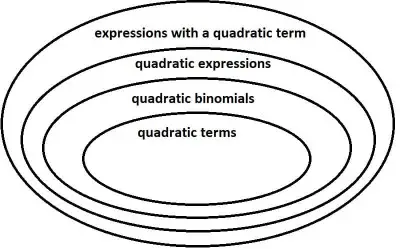
A quadratic binomial contains a squared variable (in the quadratic term) and one other term: either a linear term (like 4x) or a constant term (like 5).
(You can learn more about how to factor a quadratic binomial in my article here).
The answer to this next question will help us to classify quadratics.
Is A Quadratic A Polynomial?
A quadratic expression is a specific type of polynomial: one where the highest power of the variable is 2 (the found in the quadratic term or squared term). A quadratic can also have a linear term and a constant term, although these can both be zero.
A quadratic term is also a specific type of polynomial: one where the only term is a quadratic of the form ax2.
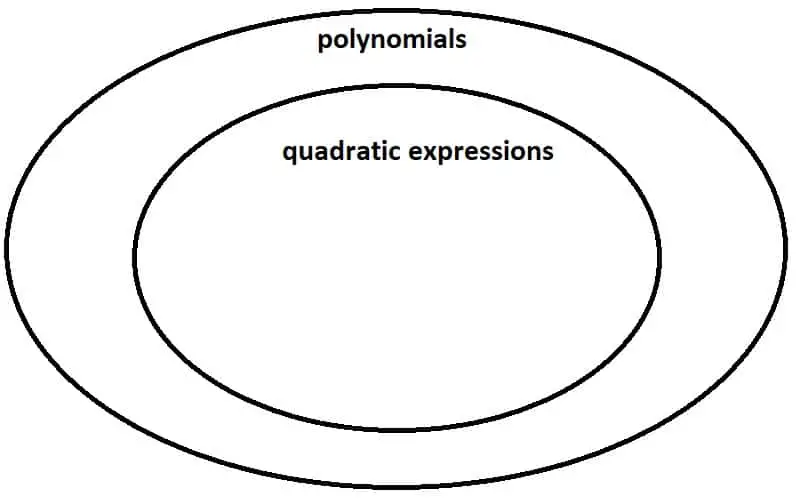
How To Tell If A Function Is Quadratic
Now that we know what quadratic means and how they are classified, it is time to talk about how to tell if a function is quadratic.
There are two different ways to tell if a function is quadratic:
- Equation: look at the equation for the quadratic function. If the highest power of x is 2 (squared term or quadratic term) and there are no negative exponents, then the function is quadratic.
- Graph: look at the graph of the quadratic function. If it has the shape of a parabola (symmetry about the vertical line through the vertex), then the function is quadratic.
What Is The Shape of A Quadratic Called?
The shape of a quadratic is called a parabola. This shape looks like a u (or n) when we graph the quadratic function.
If the quadratic function has the form f(x) = ax2 + bx + c, then the shape depends on the sign of a:
- For a > 0: the parabola is u-shaped, since it opens upward (it is convex or concave up)
- For a < 0: the parabola is n-shaped, since it opens downward (it is concave or concave down).
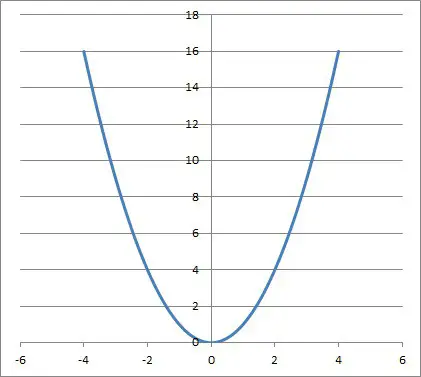
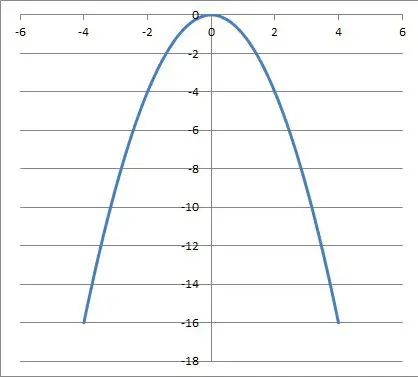
Any time you see the graph of a parabola, you know that it represents a quadratic function. Likewise, any quadratic function will have a parabola as its graph.
(You can learn more about parabolas in my article here).
What Are The Forms Of Quadratic Equations?
There are 3 forms of quadratic equations:
- Standard Form: a quadratic equation in the form ax2 + bx + c = 0 is said to be in standard form. This form allows us to use the quadratic formula to find solutions for the equation (more on this later).
- Vertex Form: a quadratic equation in the form a(x – h)2 + k = 0 is said to be in vertex form. This form allows us to easily find the vertex of a parabola (the lowest point of a parabola with a > 0, or the highest point of a parabola with a < 0).
- Factored Form: a quadratic equation in the form a(x – r)(x – s) = 0 is said to be in factored form. This form allows us to easily find the solutions of the quadratic equation (the values of x where the left side of the equation is equal to zero).
Note that all of these forms allow us to easily find the concavity of the parabola (based on the sign of a).
We can change between these 3 forms of a quadratic equation (you can learn more in my article here).
Where Does The Quadratic Formula Come From?
The quadratic formula comes from completing the square for a quadratic equation in standard form. In fact, the quadratic formula is a shortcut for completing the square.
To find the quadratic formula, we begin with the standard form of a quadratic equation:
- ax2 + bx + c = 0
To find the solutions x, we will complete the square. First, move the constant term to the right side of the equation:
- ax2 + bx = -c
Then, divide by a on both sides of the equation:
- x2 + (b/a)x = -(c/a)
To complete the square on the left side, add b2/4a2 to both sides (take the x coefficient, which is b/a, divide it by 2, which gives us b/2a, and then square the result, which gives us b2/4a2):
- x2 + (b/a)x + b2/4a2 = -c/a + b2/4a2
Now we can factor the left side, since we completed the square:
- (x + (b/2a))2 = -c/a + (b2/4a2)
- (x + (b/2a))2 = (-4ac + b2)/4a2
Now we take the square root of both sides:
- √(x + (b/2a))2 = ±√((-4ac + b2/4a2)/4a2)
- x + (b/2a) = ±√(-4ac + b2)/2a
Now, subtract b/2a from both sides and simplify:
- x = -b/2a ±√(-4ac + b2)/2a
- x = -b/2a ±√(b2 – 4ac)/2a
The solutions of a quadratic equation have 3 possible cases:
- Two real solutions: this happens when the discriminant (the term b2 – 4ac under the radical in the quadratic formula) is positive.
- One real solution (repeated root): this happens when the discriminant (the term b2 – 4ac under the radical in the quadratic formula) is zero.
- Two complex conjugate solutions: this happens when the discriminant (the term b2 – 4ac under the radical in the quadratic formula) is negative.
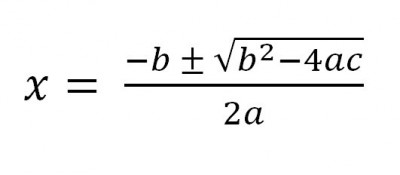
You can learn more about when to use the quadratic formula in my article here.
Who Invented The Quadratic Formula?
Simon Stevin came up with a quadratic formula to cover all possible cases in 1594. Later, in 1637, Rene Descartes published La Geometrie, which has the quadratic formula that we are familiar with in the modern era.
However, it is important to remember that the mathematical work leading up to the quadratic formula spanned thousands of years. This work was done throughout the world in places including Babylon, China, Egypt, Greece, India, and Europe.
Conclusion
Now you know what quadratic means and some of the places it shows up in math. You also know a little about the history of solutions for quadratic equations.
You can learn more about the roots and coefficients of a quadratic equation in my article here.
You might also want to check out my article on quadratic sequences or my article on solving and graphing quadratic inequalities.
You can also learn about the differences between linear and quadratic functions here.
I hope you found this article helpful. If so, please share it with someone who can use the information.
Don’t forget to subscribe to my YouTube channel & get updates on new math videos!
~Jonathon


